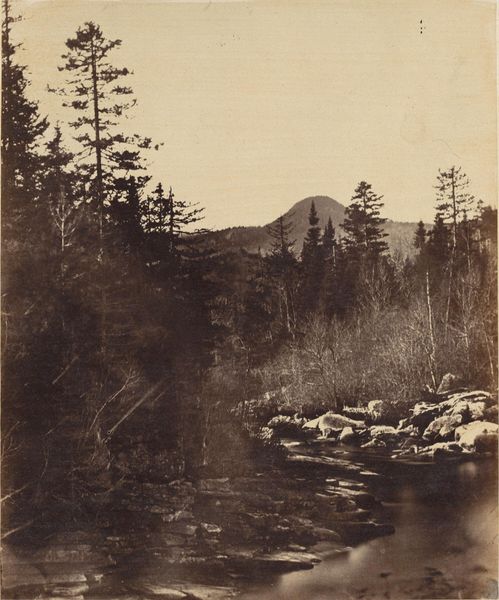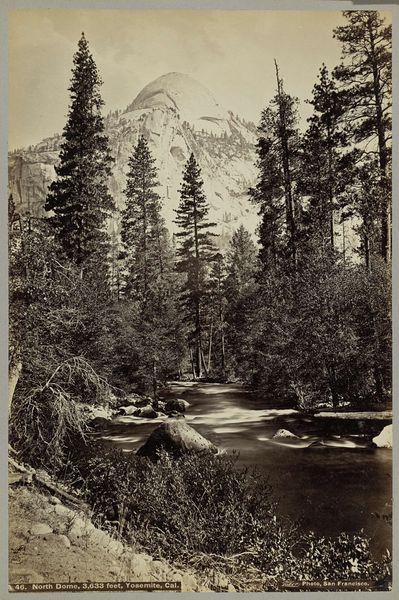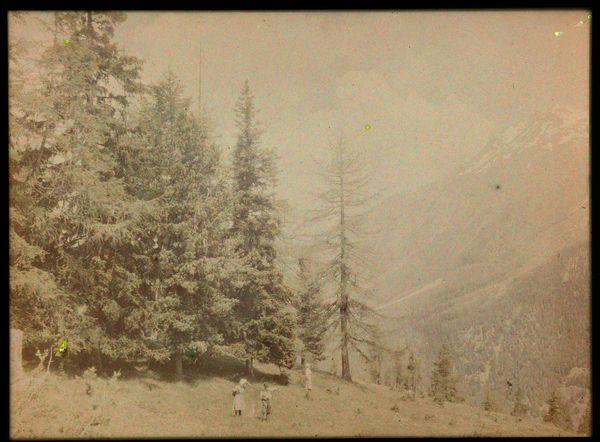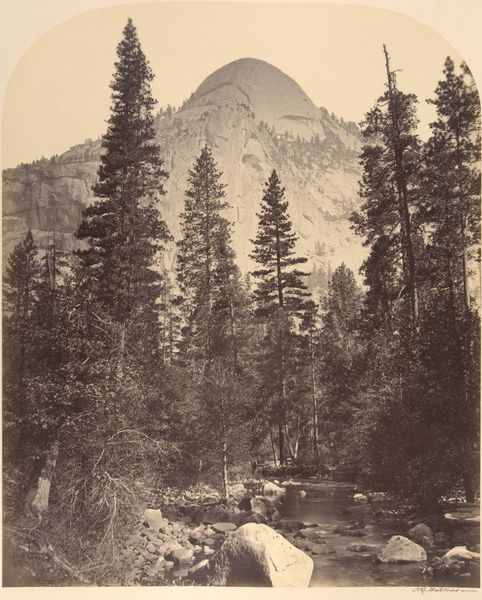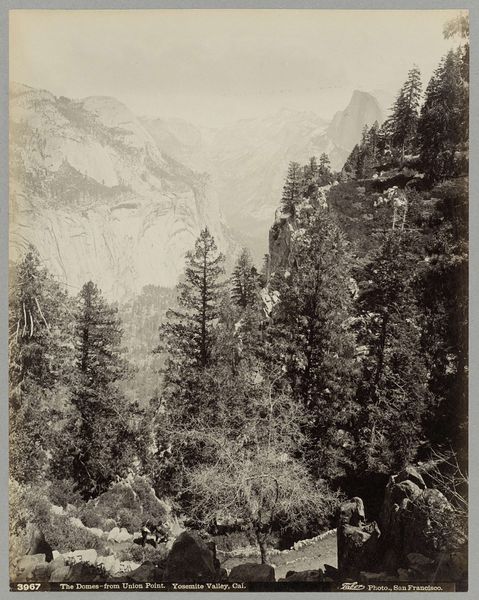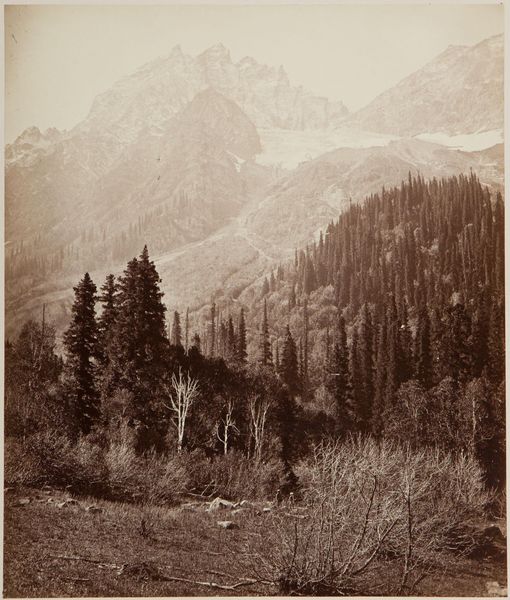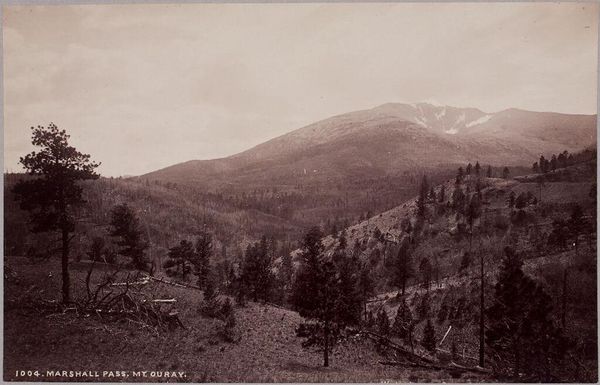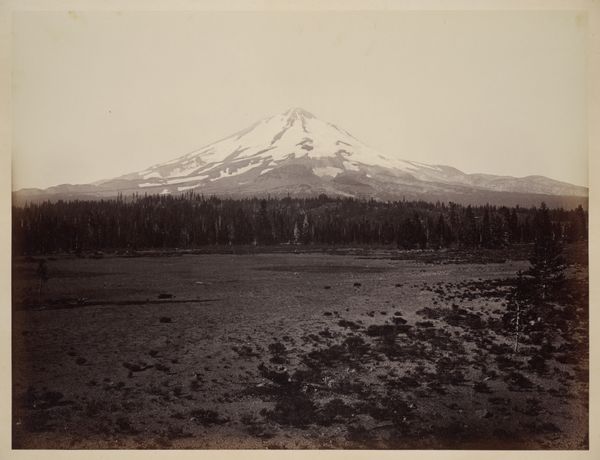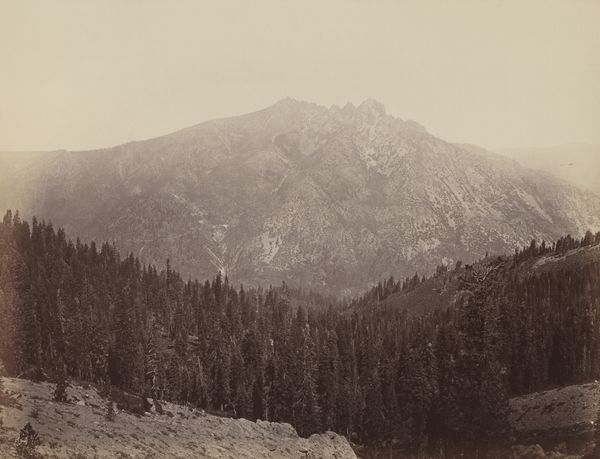
photography, albumen-print
#
pictorialism
#
landscape
#
photography
#
mountain
#
albumen-print
#
realism
Dimensions: height 243 mm, width 197 mm
Copyright: Rijks Museum: Open Domain
Curator: Here we have "Gezicht op Mount Shasta in Californië," a photograph created by Isaiah West Taber sometime between 1880 and 1900, using the albumen print method. Editor: It's starkly beautiful. A powerful, looming image, rendered almost ghostly by the albumen print. The monochromatic palette creates a solemn atmosphere, doesn’t it? It’s very grandiose. Curator: The grandiosity speaks to the enduring appeal of landscape photography as a means to convey the sublime, the spiritual power residing in nature. Look at how Mount Shasta dominates the background. It reminds me of traditional symbols of spiritual ascent and transcendence. Editor: Right, but I think we also have to consider what the photograph *leaves* out. Whose land is this? What about the indigenous narratives forcibly displaced to make way for these "pristine" views? These kinds of landscapes weren’t so empty after all. There were plenty of inhabitants who disappeared for this particular picturesque view to happen. Curator: That’s a crucial point, and a needed perspective. Taber’s visual language here relies on established traditions of landscape as an allegory. There’s a tension here; that symbol has been emptied of certain narratives but can be invested with so much symbolic power. What’s omitted is potent in its silence. Editor: Absolutely. The lack of human presence besides the implied photographer also says so much about the idea of manifest destiny. Curator: The albumen process also adds another layer, with its inherent softness and tonal range that creates both a sense of immediacy and of removal. We get this feeling for the here and now. It creates a veil through which we look at an idea of American identity through nature, nature represented as an allegory for land. Editor: By visually emphasizing this feeling, we're brought to face its uncomfortable implications head-on, asking not only *what* is present, but *who* is conspicuously missing. It makes this scene… incomplete, in a sense. A constant state of incompletion, a feeling the future still needs to work on. Curator: Exactly. And by realizing what's omitted and what that implies in historical contexts, these silent absences can bring powerful awareness and become an enduring symbol that reminds us of these histories. Editor: Precisely. We’ve got a lot to wrestle with here, looking towards the future and remembering the past at the same time.
Comments
No comments
Be the first to comment and join the conversation on the ultimate creative platform.
